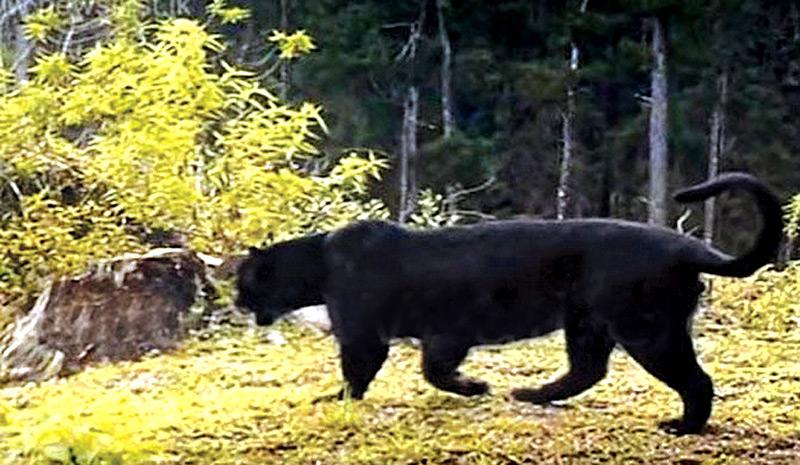
Images of a lone exotic wildcat received a lot of attention both from the media and the public over the past week. The bewilderment of this rare sighting led to the animal being dubbed as the ‘once extinct black panther’. This was followed by a series of memes, some profanely but rightfully asking to let the poor animal be.
 When the Sunday Observer contacted several environmentalists for an update on the sighting, taken by a trap camera during a research conducted by Wildlife Veterinarian Dr. Malaka Abeywardena, several declined to comment stating there was ‘very little information’ regarding the animal.
When the Sunday Observer contacted several environmentalists for an update on the sighting, taken by a trap camera during a research conducted by Wildlife Veterinarian Dr. Malaka Abeywardena, several declined to comment stating there was ‘very little information’ regarding the animal.
“We plead with the public to abstain from disturbing the natural behavior of the animal,” Department of Wildlife Conservation’s spokesperson Hasini Sarachchandra said.
Also, there is no real need for panic or to create a hue and cry over this. The recently discovered ‘black panther’ is not an extinct species. It is but a leopard with a color mutation. During the past few years three carcases of the black leopard was discovered. The carcass of one was preserved, and put on display at the Wildlife Museum in Giritale, Polonnaruwa.
According to scientific journals the ‘black panther’ gets its unique black feature due to the increase of dark pigmentation on its fur, also known as melanism.
All black animals are called melanistic animals. When in Sri Lanka it is a melanistic leopard, in other countries it could be a jaguar, tiger or even a lion.
It is believed that the leopard, that caused quite a stir over the week, could be subjected to human encroachment into its natural habitat.
Forests, the abode of these leopards are being cleared on a mass scale for crops and for housing, leaving them exposed to human activities that often result in untimely death. This, sadly, is often the fate of most wild animals in the island that is one of the world’s 34 biodiversity hot-spots.
In an interview with the CNN, conservationist Anjali Watson said 70 per cent of the leopards’ habitat has been destroyed. She added that only 750 to 1,000 adult leopards are remaining.
“The leopard is Sri Lanka’s top predator and only big cat. It is endangered not only at a species level within Asia but also as a unique Sri Lankan sub-species,” Wilderness & Wildlife Conservation Trust (WWCT), which Watson co-established, states in its official website. “It is a charismatic species due to its nature as a predator and its remarkable beauty, and is therefore an excellent flagship species in the battle to conserve the island’s rich biological diversity. The anti-poaching campaign hopes to highlight the existence of the leopard in Sri Lanka and to educate the public regarding the life and death of this remarkable predator.”
The WWCT has dedicatedly carried out awareness programs regarding the vulnerability of the animal and its poaching.
“Poaching of the leopard as well as its prey species is on the rise, resulting in the depletion of food resources for this top carnivore. Awareness around this issue needs to be heightened in order for poaching to be seen as a serious threat to the destruction of Sri Lanka’s wildlife populations,” the WWCT stated in a poster campaign.
Early this year, two leopards were found dead. The first death was reported from Udawalawe area on January 3. Following a joint operation by the Police Special Task Force (STF) and Department of Wildlife the perpetrators behind the killing were caught.
The leopard was caught in a snare they left. However, the suspects claimed that the animal was already dead when they found it. Days later a second leopard died in Peragashandiya, Yatiyantota. It was also trapped in a snare.
However, the ‘black panther’ was caught on camera as it patrolled the Central Up Country. The images that were released during the past week were actually captured in October last year. Department of Wildlife Conservation has kept the images secret in a bid to protect the animal.
“If it is spotted again we encourage the public to inform the department using our hotline 1992,” Sarachchandra said.
